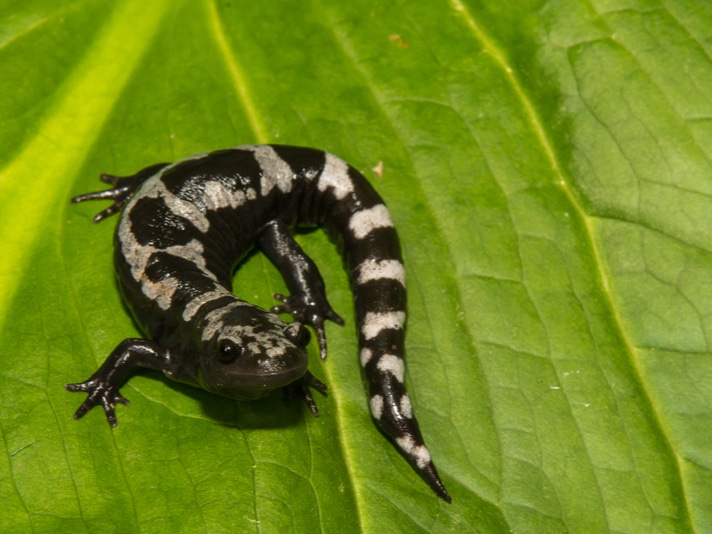The state's forest service began closing the road in the early 1970s to let these reptiles and amphibians safely cross without the threat of vehicular road mortality.
“Snake Road” in Shawnee National Forest in Illinois has closed for the annual migration of reptiles and amphibians to their winter habitats in the limestone bluffs, across the road from their summer swamp stomping grounds.
LaRue Road and Forest Service Road No. 345 also known as “Snake Road” will be closed to vehicle traffic to allow these herps, some that are listed as threatened and endangered in the state and the country, to safely cross the road. The road will remain open to people on foot, so if you are near the area, it would be an opportune time to see a lot of reptiles and amphibians in a single location, and especially on the 2.5 mile road.
Now Is The Time To Herp Snake Road At Shawnee National Forest
9 Days On Shawnee National Forest’s Snake Road Of Illinois
The road will reopen October 30. The state is home to 35 snake species, including water moccasins, southern copperhead, blue racer, northern scarlet snake, northern and prairie ring necked snake, and southern black racers, just to name a few.
The road closure also is ideal for those who love to watch birds, see native plants and observe insects as well. For more information on Snake Road and the migration, visit the Shawnee National Park website. The road is found on federal lands and specific rules apply year round on Snake Road as well as the research natural area:
- No collecting or handling of any animal or plant species is permitted unless authorized
- No tongs, snake hooks, bags or containers of any type are permitted
- All trash must be packed out
- Must stay on the Snake Road. Cannot go off the road or any trails
- No damage to vegetation is allowed. No picking of wildflowers is permitted
- No moving of rocks or logs is permitted
- Harassing or otherwise disturbing wildlife is prohibited
The state’s forest service began closing the road in the early 1970s to let these reptiles and amphibians safely cross without the threat of vehicular road mortality. The road closed in the spring and the fall each year to enable the animals to migrate to and from their breeding grounds. In the spring, the road closes March 15 to May 15. In the fall, the road closes from September 1 to October 30.
Common names of some of the species you might encounter on or near Snake Road include:
• Spiny Softshell
• Northern Red-Bellied Snake
• Spotted Salamander
• Chorus Frog
• Slimy Salamander
• Broadheaded Skink
• Eastern Hognose Snake
• Red Milk Snake
• Midland Water Snake
• Western Ribbon Snake
• Eastern Rough Green Snake
• Eastern Garter Snake
• Western Lesser Siren
• Marbled Salamander
• Small-Mouthed Salamander
• Midwest Worm Snake
• Central Newt
• Zigzag salamander
• Long-Tailed Salamander
• Black Rat Snake
• Cave Salamander
• American Toad
• Fowler’s Toad
• Copperhead
• Blanchard’s Cricket Frog
• Northern Spring Peeper
• Eastern Grey Treefrog
• Black Racer
• Bullfrog
• Green Frog
• Southern Leopard Frog
• Midland Brown Snake
• Common Snapping Turtle
• Stinkpot Turtle
• Eastern Box Turtle
• Ringneck Snake
• Eastern Painted Turtle
• Red-Eared Turtle
• Northern Fence Lizard
• King Snake
• Ground Skink
• Western CottonMouth
• Five Lined Skink
• Western Earth Snake
• Western Mud Snake
• Diamond-Backed Water Snake



